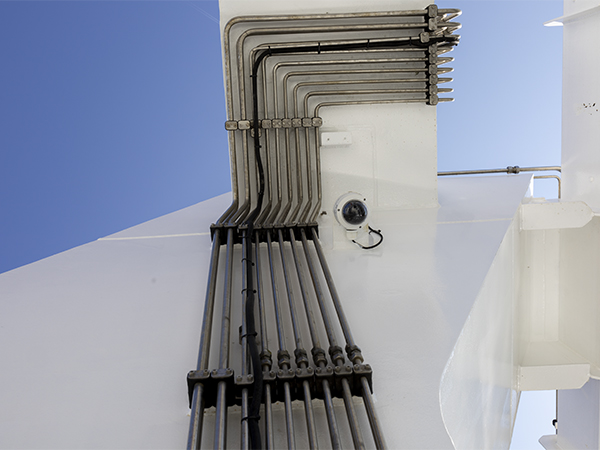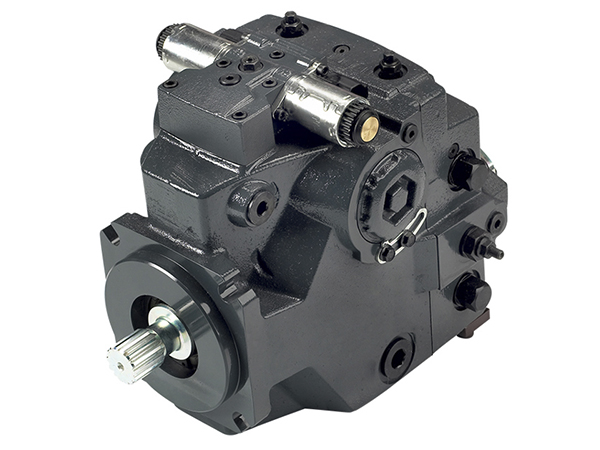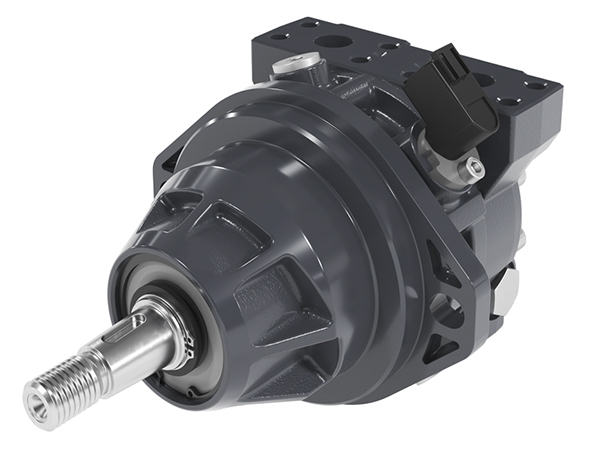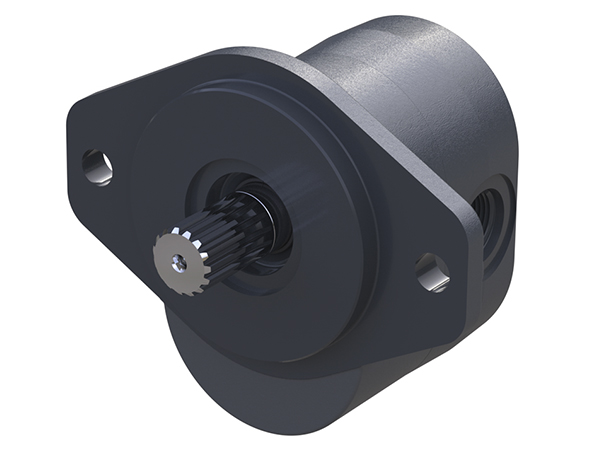Detailed guide to hydraulics
A hydraulic system is a powerful and versatile means of transmitting motion and force. Due to their ability to generate high amounts of force using relatively small components, these systems are used across various industries, ranging from construction equipment and machinery to vessels in the maritime industry. In this blog, we will explore the fundamentals of a hydraulic system and how it works.

Stainless steel hydraulic pipe installation on newbuilding
Understanding the Basic Components of a Hydraulic System
Let us cover the basics of hydraulic systems in general. At its core, a hydraulic system is a technology that uses fluid pressure to perform work. It operates on the principle that an incompressible fluid, typically hydraulic oil, is transmitted through a network of pipes, hoses, and valves to generate and control mechanical force.
Types of hydraulic fluid
Supporting systems with the correct hydraulic fluids can make or break your ability to run smooth operations. Additionally, without the proper fluids, your system is at risk of costly damages that can ultimately hinder progress or cause an overall system failure. The hydraulic fluid must have specific properties, including high viscosity and excellent lubricating qualities, to ensure a efficient functioning. It is essential that the fluid can withstand high pressures and temperatures without degrading.

Golden colored hydraulic oil flowing from stainless steel pipe
There are three main types of hydraulic fluids used to support heavy-duty equipment:
Mineral-based hydraulic fluids
Mineral (petroleum) based fluids are one of the most common base oil. As their mere name says, they have a mineral base. It is derived from the distillation of crude petroleum oil. One of the main benefits of conventional hydraulic oils is their cost-effectiveness. Thanks to their thermal stability and anti-wear properties, they can endure the most demanding working conditions.
Synthetic-based hydraulic fluids
Synthetic hydraulic oils are chemically-produced base oils. They consist of molecules precisely arranged to enhance oil performance and offer high fluid stability, lubricity, and biodegradability. Synthetic-based hydraulic oils are a perfect choice for machinery operating in extremely high/low temperatures or high pressures. Some of the main drawbacks of synthetic hydraulic oils are their higher price and incompatibility with certain seal materials.
Vegetable hydraulic fluids
Vegetable hydraulic oils are an efficient replacement for mineral-based oils. They are derived from raw plants, including turnip rape, rapeseed, sunflower seeds, soybeans, and canola. Their chemical structure is similar to that of polyol esters. Vegetable-based hydraulic oils have advanced lubrication, anti-oxidation, anti-rust, and anti-wear features. They also have a high viscosity index. As such, they are used in both mobile and stationary hydraulic systems.
Most importantly, vegetable-based hydraulic oils are natural. They have impressive environmental properties, such as non-toxicity, biodegradability, and sustainability.
What is a hydraulic pump?
A hydraulic pump converts mechanical energy into fluid power. It draws hydraulic fluid from the reservoir and then pressurizes it before sending it to the rest of the system. A pump produces liquid movement or flow but it does not generate pressure. It produces the flow necessary for the development of pressure which is a function of resistance to fluid flow in the system. There are various types of hydraulic pumps, including gear pumps, vane pumps, and piston pumps, each with its unique features and applications.
The 3 most common pump types are; variable, fixed and gear pumps:
Variable displacement pump: Flow can be varied at a given shaft speed. Typically tend to be more energy efficient because flow and pressure more closely matches load. The most common types being variable piston pumps.

Danfoss variable displacement pump
Fixed displacement pump:Flow only varies with shaft speed. Fixed displacement pumps are good for constant flow and pressure applications. The most common types being gear pumps and vane pumps.

Danfoss fixed displacement pump:
Gear pump: Flow is repeatedly moved due to interlocking cogs and gears enclosing a fixed volume and transferring it mechanically. There are two types of gear pumps, internal and external.

Danfoss gear pump
Hydraulic hoses and pipes
To transport hydraulic fluid between the components, a network of hoses and piping is used. These conduits must be able to withstand the high pressure and potential temperature variations within the system. Proper maintenance and regular inspection of these components are essential to ensure system reliability.

Hydraulic stainless steel pipes mounted on Fishing vessel Enterprice III
Hydraulic Reservoir
The reservoir, also known as the hydraulic tank, is where the hydraulic fluid is stored. It plays a crucial role in maintaining the proper level of fluid in the system, preventing contamination, and dissipating heat generated during operation. Most reservoirs have a breather to maintain atmospheric pressure and a sight glass or level indicator to monitor fluid levels.
Hydraulic Control Valves
Hydraulic valves control the flow and direction of hydraulic fluid within the system. These valves come in various types, including directional control valves, pressure control valves, and flow control valves. Directional control valves determine the direction of fluid flow, while pressure control valves regulate the system's pressure. Flow control valves, on the other hand, manage the rate of fluid flow within the system.
Watch a video of how PVG proportional valves work:
Hydraulic Actuators
Actuators are devices that convert hydraulic energy into mechanical work. They are the muscles of the hydraulic system, responsible for moving loads, opening and closing valves, and controlling other mechanical components. Common types of hydraulic actuators include hydraulic cylinders and hydraulic motors.
- Hydraulic Cylinders: These linear actuators are used to create linear motion. When pressurized fluid is introduced into one end of the cylinder, it pushes a piston, which then moves an attached load in a linear fashion. Hydraulic cylinders are often used in applications such as lifting heavy loads, pushing and pulling, and controlling the movement of construction equipment.
- Hydraulic Motors: Hydraulic motors are rotary actuators that convert hydraulic pressure into rotational motion. They are commonly used in applications where continuous rotation is required, such as in conveyor systems, winches, and the drive systems of heavy machinery.
Filters and Seals
To ensure the longevity of a hydraulic system, it is essential to keep contaminants out and prevent leaks from occurring. Filters located within the system help keep the fluid clean, while seals maintain internal pressures and prevent leaks between components.
Durability through Simplicity
One of the hydraulic systems most remarkable attributes is their unwavering durability. The beauty of hydraulic systems lies in their simplicity. The fewer moving parts there are, the fewer parts that can fail. Hydraulic systems usually have fewer components compared to complex mechanical systems, reducing the risk of breakdowns. Furthermore, because hydraulic systems often employ high-quality materials like steel and durable seals, they can endure years of use in demanding conditions without degradation.
Resilience in Harsh Environments
Hydraulic systems are renowned for their ability to perform reliably in harsh environments. Whether it's the freezing cold of the Arctic, the scorching heat of the desert, or the corrosive conditions of the ocean, hydraulic systems continue to function without faltering. Their sealed systems prevent dust, dirt, and contaminants from infiltrating, ensuring that their components remain protected and functional.
Watch a video of AS SCAN hydraulic equipment exposed to extreme weather conditions:
High Load-Bearing Capacity
Hydraulic systems are well-known for their impressive load-bearing capacity. They can generate tremendous force and can be tailored to specific applications. This ability to handle heavy loads without strain adds to their longevity, as they can consistently perform at high stress levels without compromising their structural integrity.
Maintenance and Troubleshooting
As with any complex machinery, proper maintenance is vital to ensure optimal performance and prolong its service life—this applies to hydraulic systems too. Common routine checks and maintenance tasks include:
- Inspection of the system for leaks, worn parts or damaged components.
- Examining and cleaning of filters and strainers to remove any foreign debris that may affect performance.
- Regular checking of hydraulic fluid levels and topping up if necessary. Additionally, replacing hydraulic fluid at prescribed intervals according to the manufacturer's guidelines.
- Monitoring system performance by checking pressure gauges for inconsistencies that might indicate a problem.
- Ensuring that all seals, O-rings, hoses, and fittings are in good condition and replacing them when necessary.
Constant Innovation
The durability of hydraulic systems is further enhanced by ongoing technological advancements. Innovations in materials, manufacturing techniques, and design continue to improve their resistance to wear and tear. AS SCAN engineers work tirelessly to make hydraulic systems even more rugged and resilient, ensuring that they remain relevant in an ever-evolving technological landscape. Contact us if you are interested in learning about how we can help you with your next hydraulic project.
Conclusion
Hydraulic systems are ubiquitous in a wide range of industries due to their ability to provide precise control and substantial power. Understanding the basic components of a hydraulic system is the first step in mastering the design, operation, and maintenance of these systems. Whether you're an engineer, mechanic, or someone interested in how machines work, grasping the fundamentals of hydraulic systems is essential for a successful and efficient operation. These systems continue to drive innovation and power some of the most critical machinery in the world, making them a fascinating and vital area of study for those interested in mechanics and engineering.

